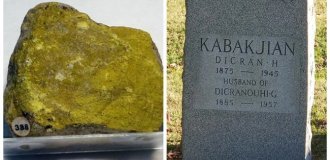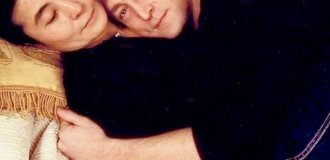Chrysostom of the 18th century occupied a leading position in Russia in the production of cold white weapons.

This was facilitated by the Russian wars, which required more and more weapons for the new imperial troops and decent quality of mass production of white weapons by Zlatoust gunsmiths. However, soon the release of other weapons was required.
The armies fought victoriously, conquered cities and countries, defended themselves courageously, Russian soldiers and officers heroically distinguished themselves in battle and should have been rewarded with dignity.


From time immemorial, the Russian Empire had its own award system, according to which a warrior who distinguished himself in battle was awarded an award edged weapon along with an order or medal. And in 1774, Empress Catherine II introduced the “Golden Weapon” with the inscription “For Bravery” to honor military feats.
Since the end of the 18th century, weapons with the inscription “For Bravery” (originally called “Golden”) were one of the most honorable military decorations of the Russian Empire. The first relevant to the regulation of award weapons should be considered the Imperial Decree of September 28, 1807, equating those awarded with gold swords with holders of orders.

Soldier's cuirassier broadsword, model 1826

The soldier's cuirassier broadsword of the 1826 model had military acceptance stamps at the base, and on the back there was an engraved inscription: “Zlatoust February 1831.”
And Zlatoust craftsmen, along with the mass production of white weapons, began to forge award-winning and decorated weapons.

Award naval officer's saber of the 1855 model for bravery", combined with the cross of St. Anne. The blade is straight, without fullers, with the inscription on the butt "Zlatoust 1864".

A wonderful prize officer's sword of the Cossack type of 1881, which belonged to the famous fencing master of his time, Colonel V.V. Andreev.

Prize officer's saber of the Cossack type, 1881

A blade with two narrow fullers, at the base of the blade on the reverse side there is an ornamental etched cartouche with the State Emblem and the inscription "Zlatoust Or. Fabr." The handle is made of black-brown bone, the handle device is made of 84 sterling silver, decorated with a statutory blackened floral ornament.
In addition to the military, award weapons were also awarded to civil servants equal in rank to the military departments.

Award decorated weapon of the State Advisor under Nicholas 1

Checker - golden weapon "For bravery"

Officer's saber of the dragoon type, model 1909, is a golden weapon "For Bravery" from the period of the First World War.

The massive Zlatoust blade is decorated with statutory etched images of a double-headed eagle and the monogram of Nicholas II, on the butt of the blade there is the inscription “Zlatoust (Oustov) or (snake) factory.” On the bow there is an inscription “For Bravery” engraved on both sides.

Annensky saber "For bravery"

Dragoon type saber - Golden St. George's weapon, combined with the award of the Order of St. Anne, 4th degree, with the inscription "For Bravery".


Asian type officer's saber for troops of the Caucasian Military District, model 1913/17, gold instrument metal.

Regarding this award checker of the 1913 model, it should be noted that the sample of 17 is distinguished by the absence of the Sovereign’s monograms on the blade and on the head of the hilt, as well as the coat of arms of the Russian Republic instead of the coat of arms of the Russian Empire on the blade. The Asian type saber was installed for the 16th Tver Dragoon Regiment and the 17th Nizhny Novgorod Dragoon Regiment, but the officers of these elite regiments most often ordered their sabers according to the established model, but the frame of the handle and protective elements were cast from silver.

Golden weapon "For Bravery" - officer's award cavalry saber of the 1827 model. The two arms of the guard are decorated with engraved inscriptions “For bravery”. The blade is made of Damascus steel with a beautiful multi-layered pattern, without marks. The entire metal device of the handle and scabbard was made and decorated using the technique of gold tauching on blued steel: pieces of rolled gold sheet were carefully stamped onto a relief steel base - this technique was characteristic of the Zlatoust masters of the mid or late 19th century.

Cossack officer saber model 1881/1910. A blade with fullers; at the base of the blade on the front side there is an image of a double-headed eagle, and on the back side there is the monogram of Nicholas II. The mark of the Zlatoust arms factory is placed on the butt of the blade.
Since 1913, the Golden Weapon “For Bravery” was officially called the “Arms of St. George” and was considered one of the distinctions of the Order of St. George.


The arms of St. George were also awarded in the navy, but such cases were extremely rare.

Small gold dagger of St. George "For bravery" issued in 1917.

The Provisional Government, which replaced the Autocracy in 1917, did not last long. Along with the advent of the new worker-peasant Soviet government, new traditions of awarding honorary weapons also came.





















